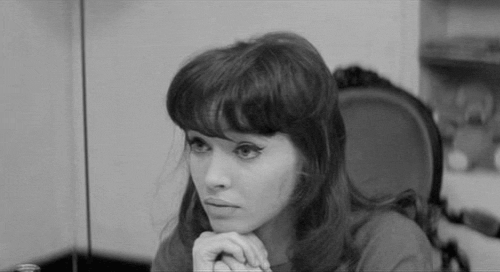Ahh... the Yoga block... the Yogis best friend. As most yogis out there will be familiar with, the yoga block is a rectangular prop made from firm foam, cork or sometimes wood, often measuring 3" x 6" x 9". The block has become an almost indispensible feature in the practice of yoga, and is often utilised to provide added support or to assist in the effective postural alignment for a pose. I love the block, and I often regard it as the best buddy/ wingman to my yoga practice. When a pose is getting too tough or I feel I'm throwing my body alignment all out of whack just to get into a pose, I reach for a block and I find my oasis of calm. Yep... the Yoga block, the best thing for Yoga practice since non-slip yoga mats ( god I love my mat, but that's for another post).
But whilst we can all compose odes counting the many ways various yoga props have changed our lives for the better, this post is not about Yoga blocks. This post is about hitting a yogi wall... the proverbial 'yoga block' one might say.
When no matter how many times you chant 'om' or shakti kick your asana off, you just can't get your groove on. You've lost your yogi mojo and you schlump to class feeling less than yogi like.
However, when encountering the Yoga block, I find it particularly helpful to take a step back and reflect on the causes or reasons WHY you are experiencing a plateau in your practice. Is it not challenging enough? Are you bored? Do you just want to sit on the couch all day? Is it all of the above? Because yes, I do get periods of general 'meh' towards it all.
 |
| To yoga or not to yoga... |
I have to confess, I have often found myself to be a victim of Yoga block. This is probably partially brought on by the fact that none of my close girlfriends practice Yoga so I am often alone in my enthusiasm for the sport so I skive off when I feel I can. And yes, you read right, I said the word 'sport'. This might be perceived by some to be a filthy word that undermines the integrity of a practice that is about spiritual enlightenment and awakening, but I personally believe it to be just as much about physical performance and athleticism as it is about ecstatic chanting and soul searching . Take for example, the amount of concentration, muscular strength, stamina and perseverance employed in an average Yoga vinyasa class. The fact that the average vinyasa class burns about 300-445 calories an hour is no coincidence either.
 |
| Sports houses themselves have cashed in on the athletic side to yoga |
Yoga is a sport and like any sport for the serious practitioner, it can result in physical wear and tear. I remember constantly living with muscular aches and pains after a bout of committed, intensive physical practice. I hated living in pain so much that I told myself I'd lay off the exercise till all the burns and aches went away. I ended laying off for 2 weeks... so much so that all the endurance I had painstakingly worked on in the weeks prior was all undone and I was nearly back where I started. Like any other sport, the maintenance of a regular, regimented practice is hard work, and eventually we all hit walls. My dad often uses the phrase 'mind over matter' alot and in this case, a mind inclined towards instant self-gratification and too much 'self-love' does affect the development of a practice.
Problem: If you suffer from physical tiredness, aches and pains in areas you never knew you had and you want to do what I did and put your practice on ice for a couple of days and cool off...
Solution: Take the first step.
When an aunt of mine returned from a climb up Mount Kilimanjaro, she reported that her guide had mapped out specific stages on their route. Before they ascended, their guide told them by the xth day of their climb, they will camp at a cabin. In the cabin, they will believe they cannot go any further and every fiber of their being would tell them to turn around and go home. It is at this point, the guide said, they would have to stand up and just take one step forward. Just one step, and they will feel absolutely fine. It would only take one step for their body to regulate and acclimatize to their conditions. In the case of Yoga, a daily intensive practice might not be recommended for early beginners, but even taking a slow Hatha 1 class or class for beginners in between intensive sessions, might just be what your body needs to adjust and adapt to help you soldier on with your practice.
In our current social climate where things are developing and changing before we can even blink (who would have expected THAT to have happened to Charlie Sheen?!) Sustaining a consistent yoga practice in one particular style can lead to boredom or malaise.
Problem: You feel a general boredom or malaise with your practice you just can't shake.
Solution: Try a style of yoga you are not familiar with or try a new studio, you never know what new yoga love might come from it! For me, often getting myself out of a funk can be as simple as getting a new yoga outfit that would get me really excited to get on my mat. Yes, how awfully superficial when the old yogis of the bygone era practiced in nowt but loin cloths but I can make my mat my catwalk if it makes me happy - so there! Having moved from being a real country bum over this past two weeks to the city, I have sniffed out some new yoga studios near me to try out and I am excited!
When it comes down to it, noone can force you onto your mat and make you enjoy it. Like all other sports, it always boils down to one unchanging constant- you. The constant inner struggle between what we want to do/ should do/ must do is something we as humans, and yogis cannot run away from. However, unlike most sports, Yoga is something that is always in practice. Like Sharon Gannon once said, the physical mat work of Yoga is just a mere exercise to enhance this internal, emotional state of Yoga. Whether it is an hour of vinyasa or half an hour of Yoga Nidra, it is keeping the lines of communication open between you and your practice that is in the end, the most important key we can possess to unlock our true potential .





























